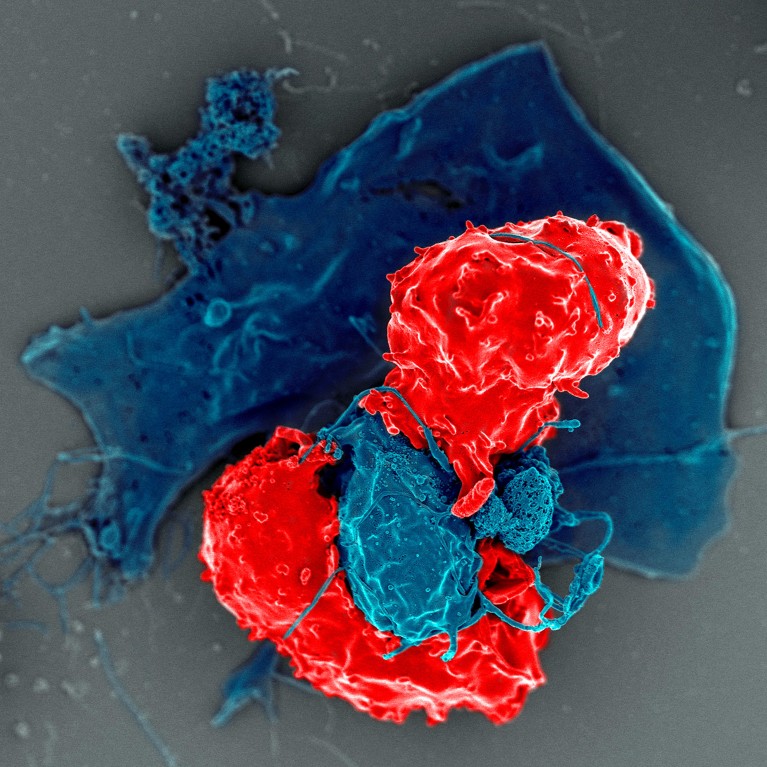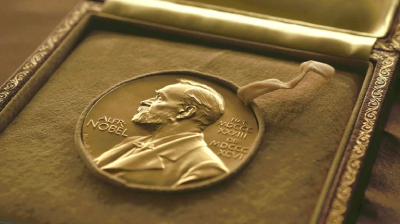Fred Ramsdell, Mary Brunkow and Shimon Sakaguchi identified regulatory T cells, which help to keep the immune system in check.Credit: F. Ramsdell, Institute for Systems Biology, Michaela Rihova/CTK Photo/Alamy
This year’s Nobel Prize in Physiology or Medicine has been awarded to three scientists for discovering a class of immune cells that help to prevent the body from attacking its own tissues.
Mary Brunkow, a molecular biologist at the Institute for Systems Biology in Seattle, Washington, Fred Ramsdell, a scientific adviser at the firm Sonoma Biotherapeutics in Bainbridge Island, Washington, and immunologist Shimon Sakaguchi at the University of Osaka in Suita, Japan, will share the prize of 11 million Swedish krona (US$1 million) “for their discoveries concerning peripheral immune tolerance”.
Drug companies flock to supercharged T-cells in fight against autoimmune disease
The trio “have provided fundamental knowledge of how the immune system is regulated”, said Nobel committee member Marie Wahren-Herlenius, a rheumatologist at the Karolinska Institute in Stockholm, at a press conference announcing the prize. Their discoveries help to explain “how we keep our immune system under control so we can fight all imaginable microbes and still avoid autoimmune disease”.
The findings led to the development of a range of therapies for autoimmune diseases that are now in early clinical development, says Samantha Bucktrout, an immunologist at Greywolf Therapeutics in Oxford, UK, who has previously worked with Ramsdell.
“If it wasn’t for these initial findings — and all of this whole field that these individuals started — we would never be at this place now where we can talk about cures,” she says. Autoimmune conditions — which include type 1 diabetes, arthritis and multiple sclerosis — affect around one in ten people1.
Protective cells
White blood cells called T cells play a crucial part in the body’s immune system by attacking infected or cancerous cells. But in 1995, Sakaguchi and his colleagues discovered a previously unknown subtype of T cells — called regulatory T cells2. These rare cells serve as crucial brake on the immune system — suppressing it and preventing it from over-reacting. Bucktrout likens the cells to an elite police force that represent only 1–2% of all T cells, but are highly effective at “keeping everyone in order”. At the site of immune reaction in the body they arrive and “shut the whole thing down”, she says. “They really mop everything up and dampen inflammation very effectively.”
How to win a Nobel prize: what kind of scientist scoops medals?
In experiments using a marker for regulatory T cells, Sakaguchi showed that mice lacking these cells developed autoimmune conditions of the thyroid, pancreas and other organs, and that giving the animals a solution containing regulatory T cells stopped disease progression. Scientists had suspected that the immune system contained its own built-in brake for decades, but had not been able to prove it.
This discovery allowed researchers to isolate and work on regulatory T cells for the first time, and other research teams began to identify different types of regulatory T cell with different kinds of immune-suppressing properties.
Later, in 2001, Brunkow and Ramsdell discovered3 a mutation in the gene Foxp3 that caused fatal autoimmune disease in mice. They also showed that mutations in the human equivalent of this gene caused a rare genetic autoimmune disease4. “It was really a molecular slog to get to that exact mutation, because it was just a very small genetic alteration that results in quite a profound change in the immune system,” said Brunkow in a telephone interview shortly after the prize announcement. “It takes a bunch of different brains all working on it together.”
In 2003, follow-up studies by Sakaguchi and his colleagues showed that Foxp3 is specifically expressed in regulatory T cells and is required for their development5.

A regulatory T cell (red) interacts with an antigen-presenting immune cell (blue).Credit: National Institutes of Health/Science Photo Library
The work “really changed our view of a lot of conditions and is still changing our view”, says Anne Pesenacker, an immunologist at University College London. The discovery of regulatory T cells, and the markers to identify them, “has helped us so much to understand autoimmunity”, she says. “We’re starting to look at can we boost this regulation.”
Promising new therapies
Studies have found that people with some autoimmune disorders, including type 1 diabetes, lupus, rheumatoid arthritis and multiple sclerosis, often have too few regulatory T cells in their blood or ones that do not function properly. And even early experiments on mice showed that there was potential to use regulatory T cells in treatments for such conditions, says Pesenacker.
These science prizes want to rival the Nobels: how do they compare?



